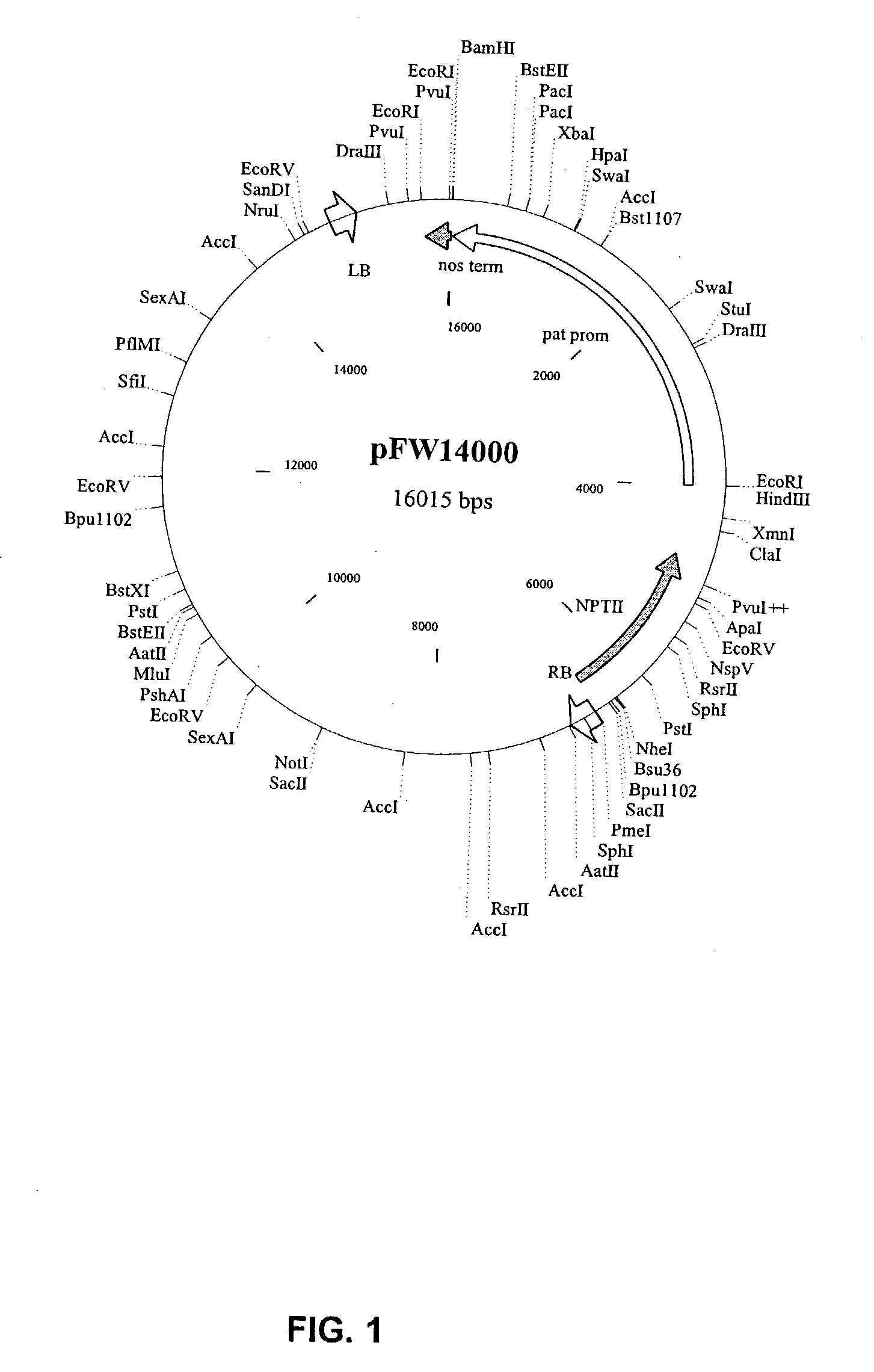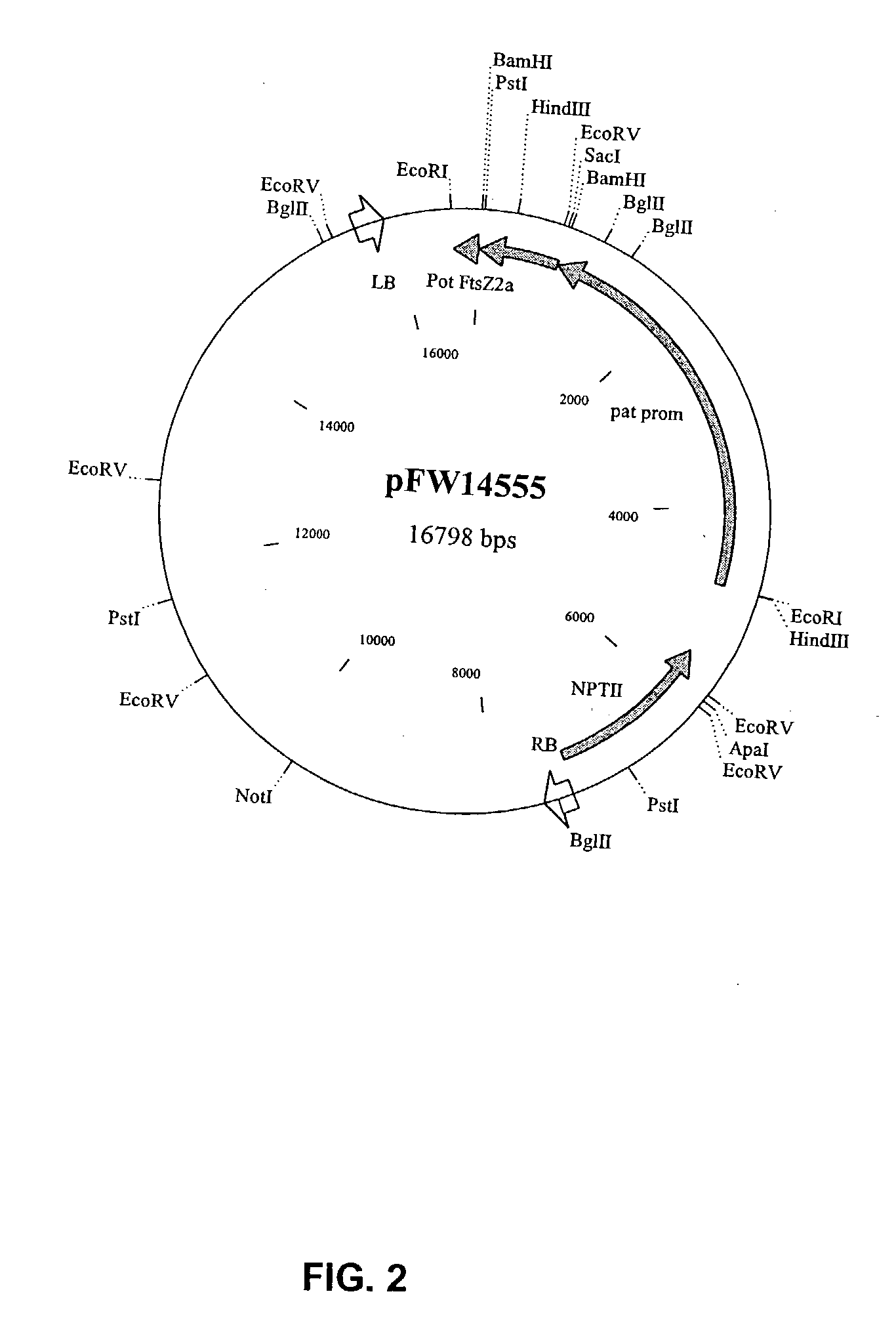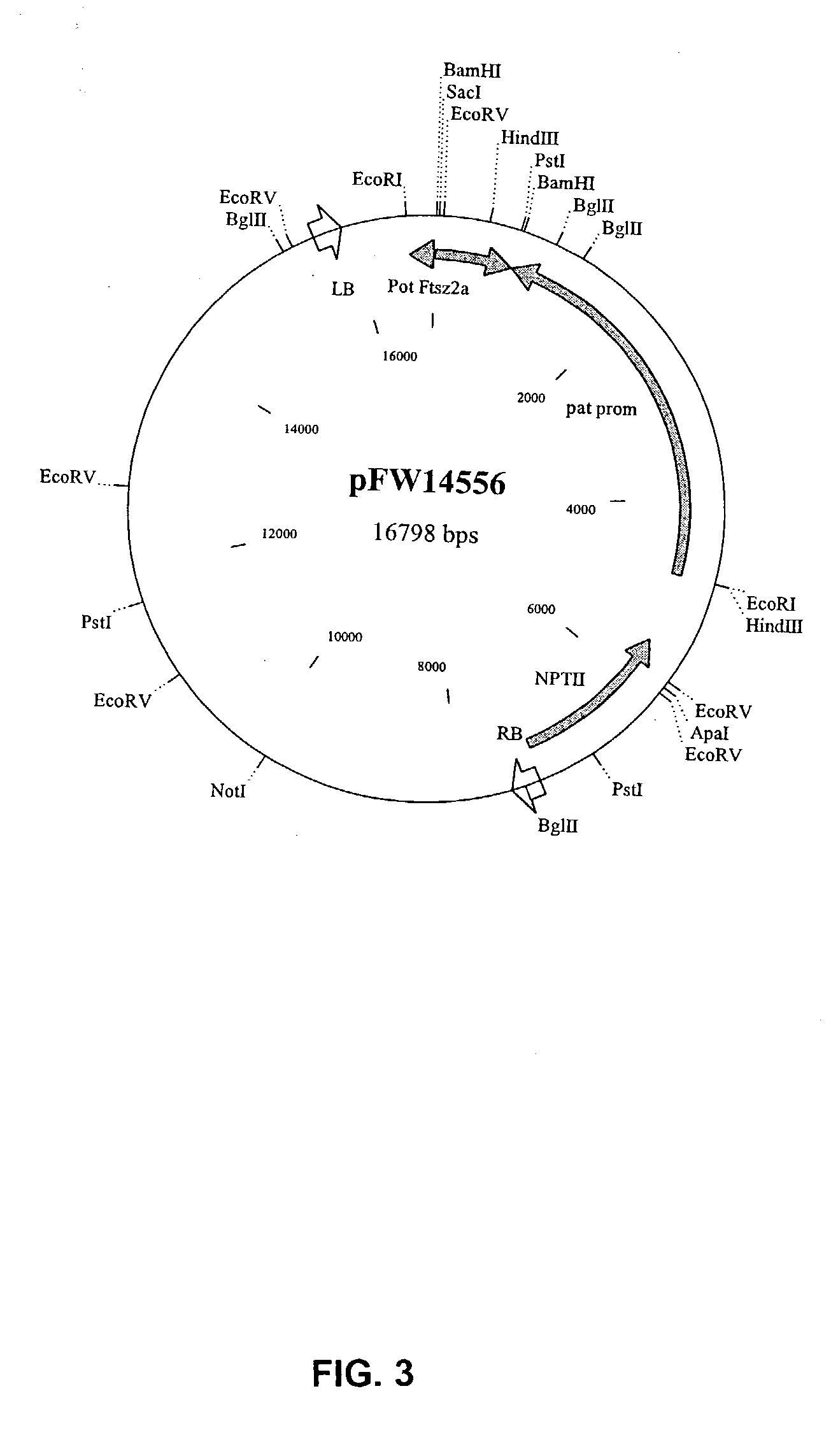Manipulation of starch granule size and number
a technology of starch granules and granules, which is applied in the field of identification of proteins, can solve the problems of insufficient understanding of the process involved in the initiation and control of granule size, and the complexity of the nature of crystalline structures, and achieve the effect of increasing or decreasing the viscosity of starch
- Summary
- Abstract
- Description
- Claims
- Application Information
AI Technical Summary
Benefits of technology
Problems solved by technology
Method used
Image
Examples
example 1
[0242] Isolation of Potato FtsZ Type 2 cDNA Fragments.
[0243] Design of Degenerate Primers.
[0244] Full length sequences coding for both FtsZ type 1 and 2 from both monocotyledonous and dicotyledonous higher plant species and the moss Physcomitrella patens were identified from publicly available databases and analyzed. (Accession Numbers for the sequences were: 1. Arabidopsis thaliana; Q425445, AL353912 and AF089738. 2. Nicotiana tabacum; AJ271750, AJ133453, AJ271749, AJ271748 and AF205858. 3. Gentiana lutea; AF205859. 4. Pisum sativum; T06774. 5. Tagetes erecta; AF251346. 6. Lilium longiflorum; AB042101. 7. Physcomitrella patens; AJ001586 and AJ249139) Regions of these sequences having high homology at the protein level were identified and used to design a series of degenerate primers for use in PCR. The primers were tailed at the 5' end with a 4 bp spacer and a BamHI restriction site (GGATCC) to enable the cloning of the fragments so generated into appropriate vectors. The sequences...
example 2
[0253] Isolation of Wheat FtsZ Type 2 cDNA Fragments.
[0254] cDNA library
[0255] A double stranded cDNA library was constructed from wheat mRNA extracted from seed at 18 days post anthesis using the SMARTTM PCR cDNA synthesis kit (CloneTech) as in Example 1.
[0256] Isolation of FtsZ cDNA Fragments.
[0257] The cDNA preparations, produced as described above, were used as the template for isolation of a specific cDNA fragment of a wheat FtsZ gene by PCR. PCR was carried out using the Advantage 2 PCR kit from CloneTech as described in Example 1.
[0258] DNA fragments of about 800 bp were isolated. The fragments were purified by agarose gel electrophoresis and had A tails added to enable them to be inserted into the CloneTech TA cloning vector (pT-Adv) by incubating the fragment with 2 units Taq Polymerase and 0.2 mM dATP at 72.degree. C. for 10 minutes. Ligation mixtures were set up with a final volume of 10 .mu.l containing 50 ng pT-Adv vector; 50 ng A tailed-PCR product; 1 .mu.l ligase buff...
example 3
[0261] Isolation of Potato FtsZ Type 1 cDNA Fragments.
[0262] Design of FtsZ type 1 Specific Primers.
[0263] Because only type 2 sequences were obtained by PCR using degenerate primers designed using both FtsZ type 1 and FtsZ type 2 sequences, an alternative strategy was employed to obtain a potato FtsZ type 1 sequence. PCR primers were designed to the three Nicotiana tabacum sequences for FtsZ type 1 (NtFtsZ1-1, NtFtsZ1-2 and NtFtsZ1-3; Genbank accession numbers AJ272748, AJ133453 and AJ271749). The selected regions corresponded to regions of high homology at the protein level of all the previously listed type 1 sequences and in an equivalent region to the section used for the isolation of the FtsZ type 2 sequences. Two sets of primer pairs were designed and synthesized. The first set was specific for the N. tabacum cDNA sequences. The second set was based on the N. tabacum amino acid sequences with the necessary degeneracy factored in. The primers are listed below:
3 Set 1. Tobacco s...
PUM
| Property | Measurement | Unit |
|---|---|---|
| Fraction | aaaaa | aaaaa |
| Fraction | aaaaa | aaaaa |
| Fraction | aaaaa | aaaaa |
Abstract
Description
Claims
Application Information
 Login to View More
Login to View More - R&D
- Intellectual Property
- Life Sciences
- Materials
- Tech Scout
- Unparalleled Data Quality
- Higher Quality Content
- 60% Fewer Hallucinations
Browse by: Latest US Patents, China's latest patents, Technical Efficacy Thesaurus, Application Domain, Technology Topic, Popular Technical Reports.
© 2025 PatSnap. All rights reserved.Legal|Privacy policy|Modern Slavery Act Transparency Statement|Sitemap|About US| Contact US: help@patsnap.com



